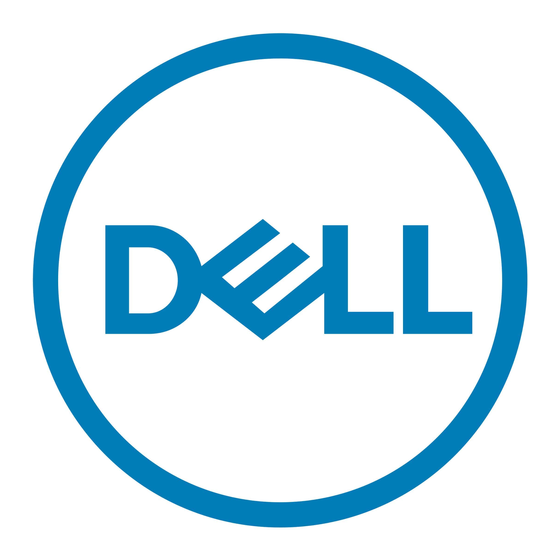Dell Z9000 Manuel - Sayfa 20
Anahtar Dell Z9000 için çevrimiçi göz atın veya pdf Manuel indirin. Dell Z9000 48 sayfaları. Z9000 system
Ayrıca Dell Z9000 için: Hızlı Başlangıç Kılavuzu (27 sayfalar)

To install QSFP+ optics into an open port, follow these steps.
1.
Position the optic so it is in the correct position. The optic has a key that prevents it from being
inserted incorrectly.
2.
Insert the optic into the port until it gently snaps into place.
NOTE: Both rows of QSFP+ ports require that the 40G optics be inserted with the tabs facing
up.
Removing the QSFP+ Optics
Remove an optic by pushing the tab on the optic and sliding the optic from the port.
When removing optics with direct attach cables (DACs) from the port, pull the release tab firmly and
steadily. Prior to pulling the release tab, you may need to gently push the optic into the port to ensure it is
seated properly. Do not jerk or tug repeatedly on the tab.
Splitting QSFP Ports to SFP+ Ports
The Z9000 supports splitting a single 40G QSFP port into four 10G SFP+ ports using one of the
supported breakout cables.
For the system to recognize the port type change, enter the stack-unit portmode command. For
example:
stack-unit stack-unit port number portmode quad
•
stack-unit: enter the stack member unit identifier of the stack member to reset. The range is from
0 to 7.
•
number: enter the port number of the 40G port to be split. The range is from 0 to 124 in increments
of 4.
Important Points to Know
•
The unit number with the split ports must be the default (stack-unit 0). To verify the unit number, use
the show system brief command. If the unit ID is different than 0, renumber it to 0 before the
ports are split by using the stack-unit id renumber 0 command in EXEC mode.
•
The quad port must be in a default configuration before you can split it into four 10G SFP+ ports. The
40G port is lost in the configuration when you split the port, so be sure that the port is also removed
from other L2/L3 feature configurations.
•
For the split-port change to take effect, reload the system after issuing the command. Save your
configuration.
Installing the Solid State Drive
The Z9000 includes a solid state drive (SSD) that acts as another storage device.
The SSD ships installed in the Z9000 system and is located in a slot on the lower-right area on the I/O
side (shown in the following illustration).
The SSD is field replaceable but not hot-swappable and supports drives that use 12 Volts and/or 5.0 Volts.
Be sure to use only drives that Dell Networking OS supports.
20
Install the Z9000
